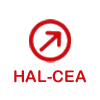Cosmic neutrons metrology for permafrost studies: ground-ice content monitoring
Résumé
The rapidly changing climate presents unprecedented challenges, especially in permafrost regions, where its thawing directly affects houses, mines, roads, pipelines, airport runways, and rail tracks. Monitoring the dynamics of ground ice in permafrost landscapes is essential for assessing geohazards and adapting infrastructure to changing conditions. This abstract presents a new initiative utilizing cosmic neutrons metrology for permafrost studies, specifically focusing on ground-ice content monitoring. Traditional methods for assessing ground-ice content in permafrost regions involve labor-intensive surveys and analysis of geomorphological features. However, these approaches are often limited in spatial coverage and may not capture the full extent of ground-ice distribution.
In response to these challenges, we propose leveraging cosmic neutrons as a non-invasive and scalable method for assessing ground-ice content. Cosmic neutrons naturally penetrate the Earth's surface and interact with hydrogen atoms in the soil, including those bound in water molecules. By measuring the cosmic neutron albedo, which is the flux of epithermal neutrons that are partially thermalized in the ground, we can infer the presence and distribution of ground ice. This approach builds upon established techniques used for soil moisture monitoring, adapting them for permafrost studies. In that regard, we conducted Monte Carlo simulations of cosmic neutron transport and interaction with modeled ground to investigate the feasibility of using cosmic neutrons for ground-ice content monitoring. Our simulations considered various ground compositions and ice concentrations to assess the sensitivity of cosmic neutron measurements to ground-ice content. The results of our simulations provide promising proof-of-concept for the proposed method, demonstrating its potential for accurately estimating ground-ice content in permafrost landscapes. Additionally, we are developing at DOSEO (CEA – Saclay, France) thermal over fast neutron reference fields that could be used to test, characterize, and calibrate detectors specifically for the presented application.
The proposed method offers several advantages. Firstly, it provides measurements on a metric scale (~10m wide on ~1m depth), effectively balancing local detail with regional coverage, thus making it well-suited for mapping geohazards on a kilometric scale. Additionally, cosmic neutrons albedo measurements is non-destructive and non-invasive and can be applied across diverse permafrost landscapes, offering valuable insights into ground-ice dynamics. Moreover, mapping ground-ice content is feasible through the flexible deployment of neutron detectors. These detectors can either be moved around the study area to gather spatially distributed measurements or installed as fixed monitoring stations, enabling continuous observation of ground-ice dynamics across different seasons and over time. Integration of data from cosmic neutrons albedo measurements into Geographic Information System (GIS) applications enhances the ability to map geohazards and predict future changes in permafrost landscape stability. By combining information on ground-ice content with elevation, drainage patterns, periglacial features, and infrastructure, a better understanding of the interactions between climate change and geohazards in permafrost regions is achievable.
In conclusion, cosmic neutrons metrology offers a promising approach for monitoring ground-ice content in permafrost landscapes. By advancing our understanding of permafrost dynamics, this initiative contributes to the broader goals of cryosphere monitoring and sustainable development.
Mots clés
metrology
permafrost
Monitoring
ionizing radiations
radioactivity
geohazard assessment
cosmic neutrons
neutrons
epithermal neutrons
soil moisture monitoring
Monte Carlo
simulation
particle transport
cosmic neutron transport
cosmic neutron interaction
fast neutrons
calibration
detector
instrumentation
nuclear instrumentation
non-destructive testing
non-invasive testing
ground-ice dynamics
Geographic Information System (GIS)
climate change


